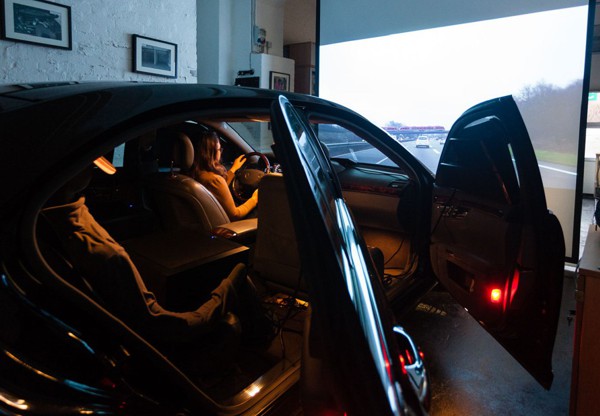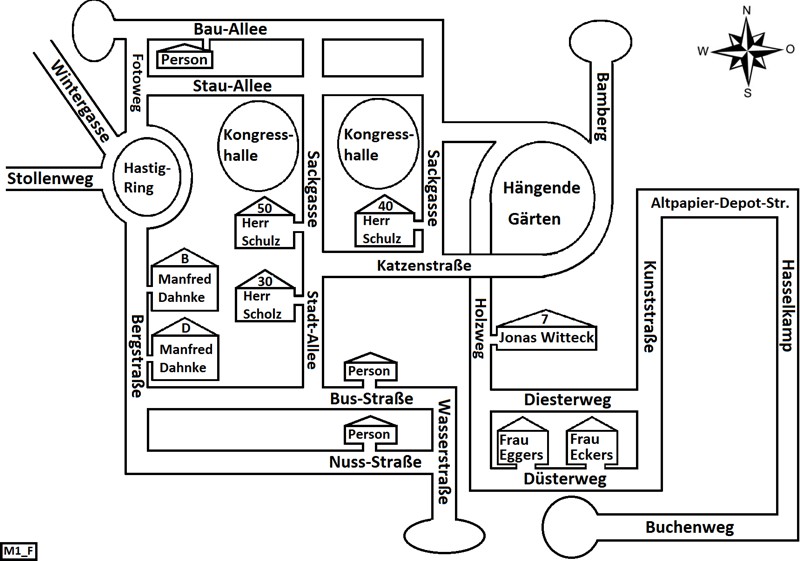Map Task
 |
||
| Contents: | ||
The Map Task scenario was used to elicit spontaneous speech for the SPID corpus. Both dialogue partners received a map, with the instruction giver having a route drawn on it. The other speaker was the instruction follower. The giver had to explain the route to the follower, who had to draw it on his/her own map. Different maps were designed for each of the recording conditions. To allow further analyses of the influences of different maps on the speech signals, 6 maps were only used in the laboratory conditions, and 4 of them only for recordings in the real driving situations. Seats and roles of giver and follower were chosen by the subjects, but never changed within each dialogue pair for the rest of the experiment.
The two maps given to a pair of subjects shared many common features, but there were some keywords that only appeared on the giver’s map or on the follower’s map. In addition, names of streets and persons as well as house numbers were slightly different. Some parts of the maps even had slightly different structures. Very often, the giver had a name on his/her map like “Schulz”, whereas the follower had two names, “Schulz” and “Scholz”, so that a controversial discussion was fostered. Maps and noise conditions were randomised for both recordings in the laboratory and the driving car.
 |
 |
|
| Map of the follower. | Map of the giver. |

 On behalf of the members of the Chair of Digital Signal Processing and System Theory, we would like to take this opportunity to wish you all a very Merry Christmas and a peaceful, restful winter break. We hope that this festive season brings you joy, relaxation, and cherished moments with your loved ones.
On behalf of the members of the Chair of Digital Signal Processing and System Theory, we would like to take this opportunity to wish you all a very Merry Christmas and a peaceful, restful winter break. We hope that this festive season brings you joy, relaxation, and cherished moments with your loved ones.